21 Top-Rated Tourist Attractions in Japan
by Vagatrip

Japan is a fascinating country that combines ancient traditions with modern technology. Many people are surprised to learn that Japan, despite being a small country, has a long and captivating history that goes back thousands of years. Even before Europe built its magnificent cathedrals, Japan had well-established Shinto and Buddhist temples that attracted visitors with their intricate designs. At the same time, Japan excelled in various crafts and industries, such as porcelain, ceramics, and silk production.
Despite wars and natural disasters, Japan has managed to preserve or rebuild much of its rich traditional heritage. Visiting Japan is an unforgettable experience because it offers a wide range of attractions, activities, and interesting places to explore. It's definitely worth investing your time and money in a vacation to Japan.
To help you plan your trip, we have compiled a list of the best tourist attractions in the country.
Here are 21 Top-Rated Tourist Attractions in Japan
1. Mount Fuji
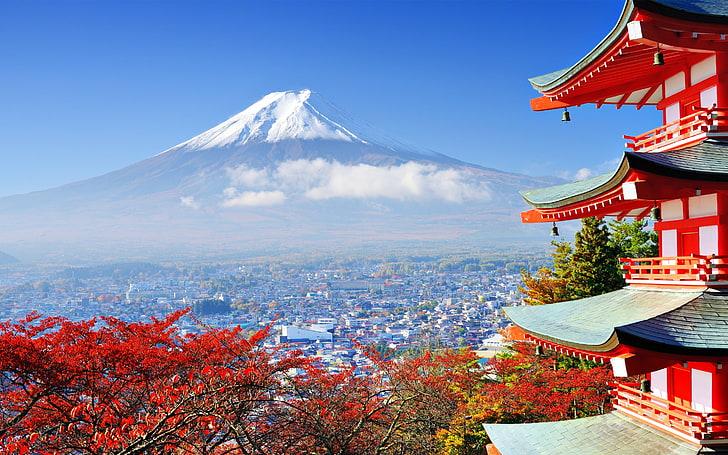
Undoubtedly Japan's most renowned landmark, the magnificent Mount Fuji, also known as Fuji-san, stands as the highest peak in the country. Rising 3,776 meters above the predominantly flat landscape to the south and east, this majestic and legendary mountain is visible even from Tokyo, over 100 kilometers away.
For centuries, Mount Fuji has been revered in various forms of art and literature, earning it the esteemed recognition of UNESCO for its cultural significance worldwide in 2013. It forms part of the Fuji-Hakone-Izu National Park and attracts over a million people each summer who embark on a pilgrimage to climb its slopes, culminating in a breathtaking sunrise experience from its summit.
While some individuals still opt to commence their ascent from the mountain's base, the majority of climbers now begin from the halfway point, specifically the 5th Station. This choice allows for a more manageable ascent, spanning approximately six hours. Those who undertake the complete climb are advised to commence their journey in the afternoon and include an overnight stay at one of the designated "Mountain Huts" along the way. This strategic approach enables them to resume their ascent the next day and reach the summit in time for sunrise.
Certainly, for many people, gazing at the mountain from a distance or witnessing its magnificence from the comfort of a fast-moving train suffices as a way to proclaim, "I have been there, and I have experienced it.
2. Imperial Tokyo
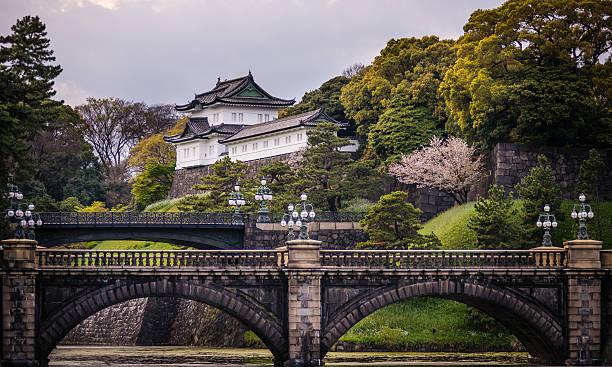
When you're in Tokyo, make sure to visit the Imperial Palace, which is the city's most well-known landmark. It has stunning 17th-century parks that are surrounded by walls and moats. Even though most of the palace is off-limits to the public since it's still used by the Imperial family, you can still enjoy a pleasant stroll through the grounds.
While exploring the surrounding parkland, you'll come across many vantage points offering excellent views of the palace. As part of an organized tour, visitors are allowed to enter the East Higashi-Gyoen Garden and other designated areas that are open to the public. One of the most enchanting sights is the famous Nijubashi Bridge, also known as the "double bridge," because of its reflection in the water.
Another must-visit spot for tourists in Tokyo is the renowned Ginza shopping district. This vibrant area is always bustling with activity. Here, you'll find the Kabuki-za Theatre, where you can watch captivating Kabuki performances, and the Shimbashi Enbujo Theatre, which hosts traditional Azuma-odori dances and Bunraku performances.
3. Hiroshima Peace Memorial Park
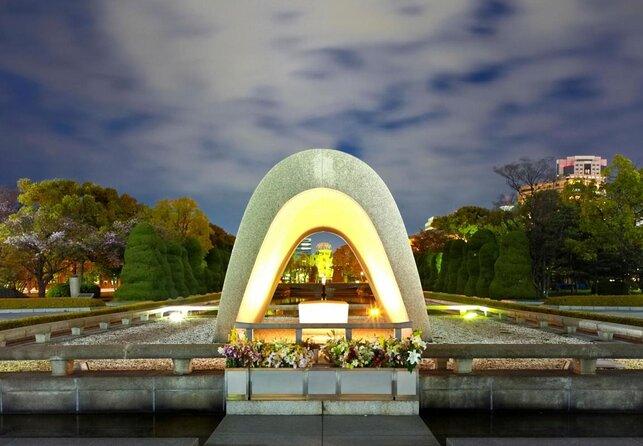
The atomic bombing of Hiroshima in August 1945 was a terrible event, and it is well-known for its horrors. However, Hiroshima has done a remarkable job in honoring the many victims of this first-ever nuclear attack. It has become a symbol of long-lasting peace.
Hiroshima Peace Memorial Park, which is visited by over a million people annually, including many from other countries, is located where the atomic bomb detonated. This area used to be a bustling part of the city. The park contains several important monuments, memorials, and museums that relate to the events of that fateful day.
Besides the beautiful grounds and gardens with their colorful cherry blossoms, the park is home to the Peace Memorial Museum. Inside the museum, you can explore various exhibits that focus on the importance of world peace. Additionally, you'll find the Memorial Cenotaph, the Flame of Peace, and the Atom Bomb Dome, which is the remains of a building that was at the center of the explosion.
4. Historic Kyoto
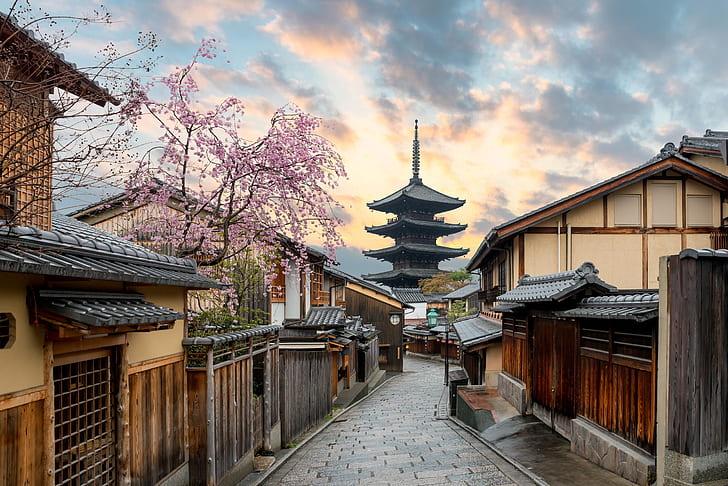
Kyoto, a captivating city in Japan, attracts over 10 million visitors every year and stands out as one of the few places in the country that remained unscathed during World War II. The main draw for tourists is the opportunity to wander through Kyoto's charming ancient streets and marvel at its architectural treasures, many of which have remained unchanged for over a millennium since the Imperial family settled here.
Even back then, Kyoto held the distinction of being Japan's foremost cultural hub. This rich heritage persists today, with numerous museums and art galleries that brim with significant sculptures, paintings, and various art forms.
Kyoto's remarkable architecture, which bears the influence of Buddhism, is particularly noteworthy. The city boasts numerous well-preserved temples, 30 of which are still actively used. Among the important structures, the Golden Pavilion (Kinkaku-ji) is a standout. This 14th-century marvel is renowned for its stunning exterior covered in delicate gold leaf.
Don't miss the chance to explore Nijo Castle, a fortress dating back to the 17th century. It has managed to preserve its original walls, towers, and moat. Additionally, the castle's splendid gates and exquisitely decorated palace are sights worth experiencing.
Another must-visit landmark is the original Kyoto Imperial Palace (Kyoto-gosho), constructed in AD 794. It remains one of the most popular historical sites in the city.
Last but not least, a visit to Kyoto would be incomplete without taking the time to wander through the enchanting Arashiyama Bamboo Grove. This picturesque area of towering bamboo is just a short stroll away from the town center.
5. The Island Shrine of Itsukushima, Miyajima
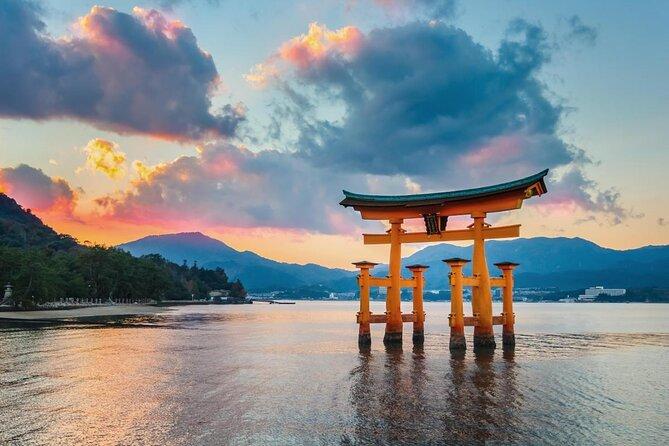
Just a quick boat ride away from mainland Hiroshima lies Miyajima Island, renowned worldwide as Japan's Shrine Island. It occupies an area of 30 square kilometers in Hiroshima Bay and is famous for the Itsukushima Shrine, a Shinto temple dedicated to the wind god Susanoo's princess daughters.
Built in the eighth century, most of the shrine's buildings emerge from the waters of a small bay, supported only by pillars. The sight at high tide is absolutely breathtaking, creating the illusion that these structures, including the famous Great Floating Gate (O-Torii), are floating on the water's surface.
Connected by walkways and bridges, Miyajima offers an intriguing environment to explore, especially its larger halls. These include the beautiful Main Hall (Honden), the Offerings Hall (Heiden), the Prayer Hall (Haiden), and the Hall of a Thousand Mats (Senjokaku).
The shrine's stage is another noteworthy feature, where visitors can enjoy traditional dances and musical performances. Additionally, the island's stunning grounds and gardens, inhabited by wild deer and various bird colonies, are definitely worth exploring.
Please be aware that there may be some interruptions and inconveniences until 2022 due to significant renovations happening at this historic site.
6. Temple City: Historic Nara
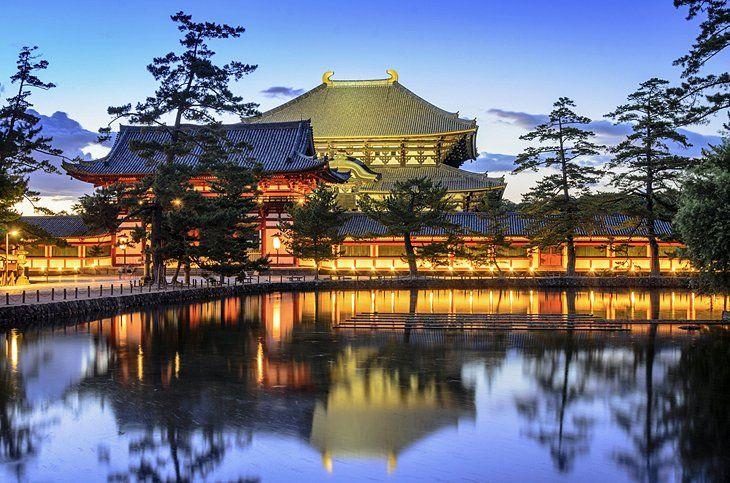
Nara, a beautiful and untouched city, has been the center of Japanese culture for centuries. It is filled with historic buildings, national treasures, and stunning artworks.
Besides its charming old streets, Nara is famous for its ancient temples. One of the most well-known is Kofuku-ji Temple, built in the seventh century. It is part of the Seven Great Temples of Nara and is truly magnificent. Another impressive temple is Todai-ji, also known as the Great East Temple, which was constructed in the eighth century. One of its main attractions is the enormous bronze statue of the Great Buddha, created in the year 749.
Todai-ji also features the striking Great South Gate, called Nandaimon. This incredible two-story structure stands on 18 columns and is guarded by two eight-meter-tall Nio statues. Additionally, the Hall of the Great Buddha in Todai-ji is worth mentioning. It is the largest wooden building in the world and holds great significance.
Overall, Nara offers a wealth of historic treasures, including temples, statues, and architectural wonders, making it a must-visit destination for those interested in Japanese culture and history.
7. Osaka Castle
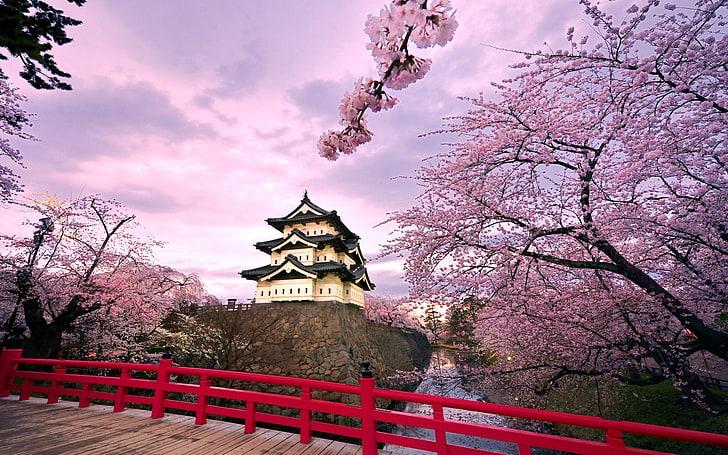
Osaka Castle, also known as Ōsaka-jō, was constructed in 1586 by the famous Japanese warrior and politician Toyotomi Hideyoshi. It held great significance as the largest and most important fortress in Japan during that time. Although it has been destroyed and rebuilt multiple times, the current structure, built in 1931, stays faithful to the original design.
A visit to Osaka Castle offers several notable attractions. The main tower is an impressive five-story structure standing at a height of 42 meters. It sits on a formidable stone base that is 14 meters tall. Inside the tower, you can explore various displays that showcase the castle's history and the city's past. Make sure to visit the top floor for breathtaking views of Osaka, especially during sunset.
Osaka Castle Park is home to other interesting sights as well. One of them is the Hokoku Shrine, which is worth a visit. Another notable destination is Shitennō-ji, the most famous temple in Osaka, dating back to AD 59. This beautiful shrine is recognized as Japan's first Buddhist temple and features a five-story pagoda, along with other splendidly adorned buildings. Among them are the Golden Pavilion (Kondō), which displays exquisite statues and paintings, the Lecture Hall (Kōdō), and a charming covered corridor that connects three of the site's gates.
8. Chūbu-Sangaku National Park and the Japanese Alps
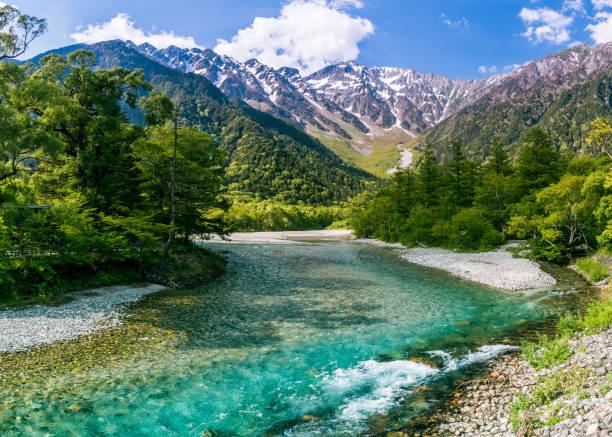
Japan has numerous beautiful natural areas, many of which are recognized as national parks or UNESCO World Heritage Sites. One of the most breathtaking places in the country is Chūbu-Sangaku National Park, situated in the middle of Honshu. Within this park, you'll find the Hida Mountains, also known as the Japanese Alps, located in the northern and central regions.
This region boasts some of the highest peaks in Japan, such as Hotaka, towering at 3,190 meters, and Yari, reaching 3,180 meters. Similar to the Central European Alps, the Japanese Alps offer a picturesque landscape and abundant snowfall during winter, attracting hikers, climbers, and skiers during different seasons.
One of the park's highlights is its rich variety of plants and animals, including rare species like ptarmigans and mountain antelopes that inhabit the higher altitudes. The park is also famous for its numerous hot springs, which have led to the development of various spas and holiday resorts. Kamikōchi is the most well-known among these relaxation destinations.
9. The Atsuta Shrine, Nagoya
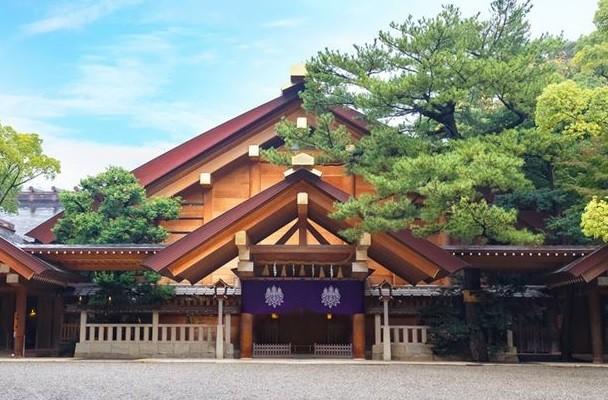
The Atsuta Shrine is located in Nagoya, Japan's important Shinto shrine. It is highly revered and attracts over five million visitors annually. It was established in the first century and is particularly known for preserving the "grass-mowing sword," which is one of only three Imperial insignias in the country.
The shrine has several noteworthy features, such as its main shrine called Hongu, which is surrounded by a protective wall. There is also a treasury that houses numerous art pieces, including ancient and modern paintings, ceramics, jewelry, and traditional masks. If you're in Nagoya, don't miss the opportunity to visit Nagoya Castle. This magnificent castle, constructed in 1612, is situated on a moat and has a main tower that stands 48 meters high. It is famous for its two gilded dolphins known as shachi. The castle is also home to a museum displaying art treasures from the former palace and offers breathtaking views of the city and the Nobi Plain.
10. Fukuoka Castle Ruins and the City's Ancient Festivals
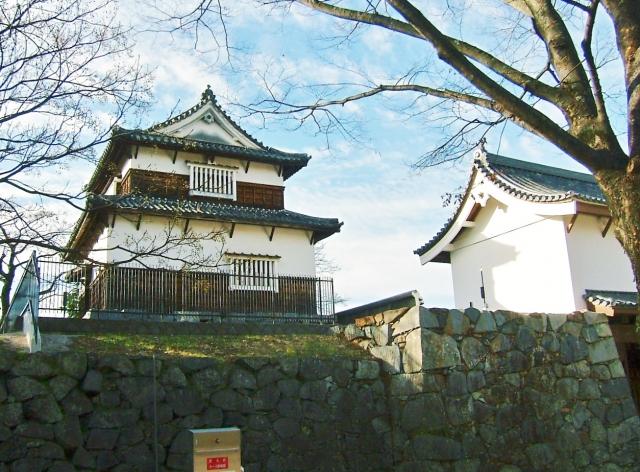
The remains of the once-impressive Fukuoka Castle, constructed in the early 1600s, can be found at Maizuru Park. This castle used to exemplify the grand hilltop residences favored by Shoguns and urban rulers. However, it was demolished following the Meiji Restoration as a reaction against the feudal system.
Presently, only the castle ruins remain, including the main entrance and one of the towers. Visitors primarily come here for the pleasant walking paths and picturesque viewpoints that offer beautiful sights of the Naka River and the cityscape from the top of the ruins. The park is particularly delightful during spring when the cherry blossoms are in full bloom.
Fukuoka is also renowned for its numerous events and festivals, with Hakata Gion Yamakasa being the most famous. This celebrated event, dating back 700 years and lasting two weeks, takes place every July. It attracts millions of visitors from all over the country who come to witness the vibrant parades, traditional races, and costumes.
The city also offers modern attractions, with Canal City Hakata being the most notable. This self-contained city-within-a-city features a canal that runs through the complex, along with excellent shops, hotels, restaurants, and a theater.
11. Sapporo, Hokkaido
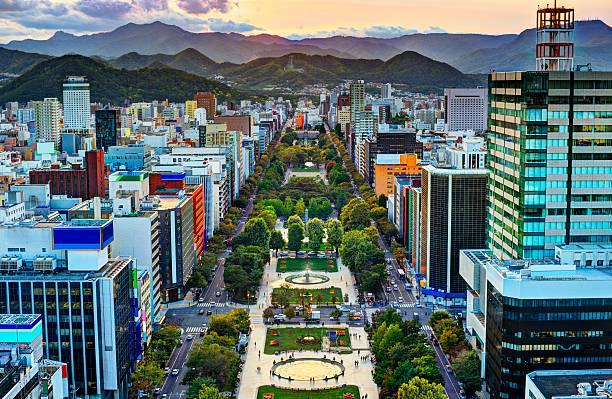
Sapporo is a city in Hokkaido, the northernmost island of Japan, and it has a lot to offer to tourists. Being the largest city on the island, it is a vibrant hub of cultural activities with numerous events and festivals. The city is known for its unique culinary style, rich theatrical history, and abundance of museums, galleries, and parks.
The downtown area of Sapporo is the main attraction, and its centerpiece is Odori Park, a large and beautiful green space that is perfect for exploring. From there, you can easily visit other interesting places like the Sapporo TV Tower and the famous aerial tramway. If you take the Mount Moiwa Ropeway, you can reach the Upper Station at the summit, where you can enjoy breathtaking views of the city, especially at night.
Mount Moiwa is not only a scenic spot but also home to the Mount Moiwa Ski Resort, a popular winter destination. The city gained popularity for winter sports after hosting the 1972 Winter Olympics. If you happen to visit in February, don't miss the Sapporo Snow Festival, a major event that attracts over two million visitors.
12. Fushimi Inari-taisha Shrine, Kyoto
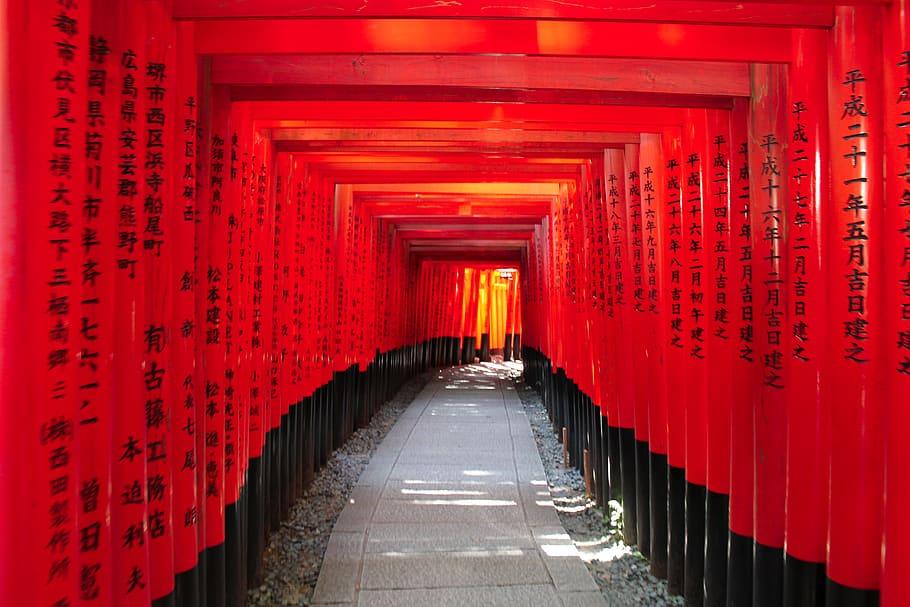
When you go to Fushimi Inari-taisha Shrine, you will be surrounded by a beautiful red color. This shrine is one of the most significant in Japan and is located in southern Kyoto. It is famous for its thousands of scarlet-colored gates that form a network of trails. Walking along these covered trails is a serene experience that leads you towards the forest around Mt. Inari.
Inari is an important deity in the Shinto religion, particularly associated with rice. Among the numerous shrines dedicated to Inari, Fushimi Inari is considered the most important. While many visitors come to admire the vibrant gates, the shrine itself is also open for exploration and features impressive buildings.
If you're up for it, you can hike to the top of Mt. Inari, which usually takes around two to three hours round-trip. Along the way, you'll encounter smaller shrines, gates, and even places to grab a bite to eat.
13. Koyasan Okunoin
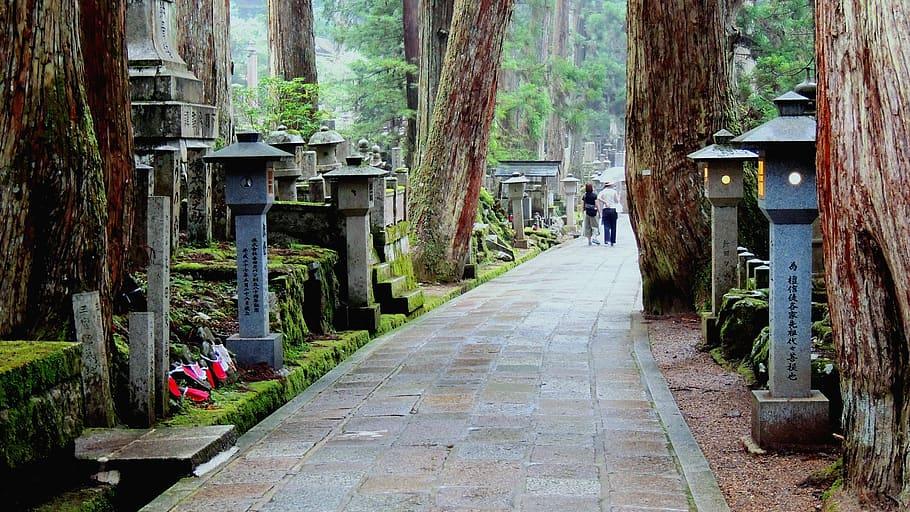
Japan's Koyasan Okunoin cemetery is a unique and fascinating attraction, despite cemeteries not typically being popular tourist spots. It holds great significance as one of the most sacred places in the country and houses the mausoleum of Kobo Daishi, the revered founder of Shingon Buddhism.
Kobo Daishi, also known as Daishi or Kukai, holds immense importance in Japan's Buddhist history. Legend has it that he remains in eternal meditation, awaiting the arrival of the Buddha of the Future. People who embark on the pilgrimage to his mausoleum do so in hopes of finding salvation in their present lives.
Upon entering the cemetery, visitors will cross the Ichinohashi Bridge, the first bridge leading to the burial ground. Along the path to the mausoleum, they will encounter over 200,000 tombstones. Further along, at the Gokusho Offering Hall, visitors can make offerings and pray for their departed family members.
The most sacred area of the cemetery is separated from the rest by the Gobyobashi Bridge. Here, visitors will discover the Miroku Stone and the Torodo Hall, a significant worship hall situated just in front of the mausoleum. The hall is illuminated by thousands of lanterns. Behind it lies the awe-inspiring mausoleum itself, providing an unforgettable experience for visitors.
Regardless of personal beliefs, a profound sense of power can be felt within the presence of Kobo Daishi, as pilgrims from all corners of the country gather to chant and pray.
14. Kiyomizu-Dera, Kyoto
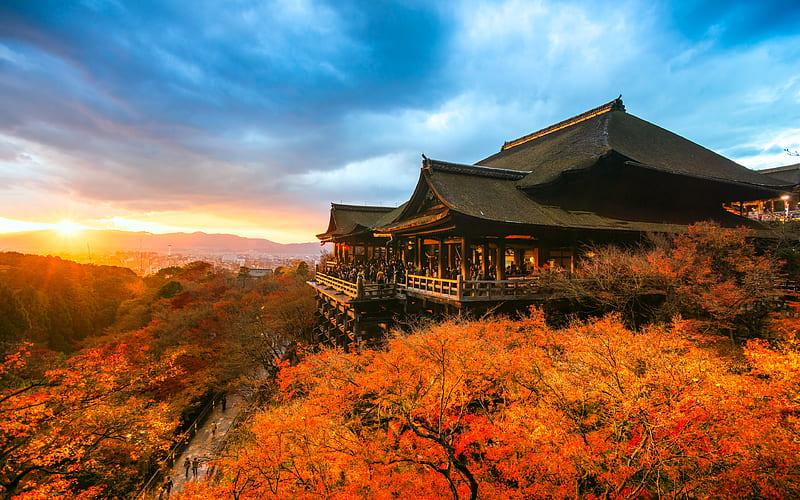
Kyoto has an abundance of stunning places and famous landmarks. The city itself is a major tourist attraction. However, a visit to Kyoto would be incomplete without experiencing Kiyomizu-Dera, also known as the Pure Water Temple.
Kiyomizu-Dera is one of the most significant temples in Japan, constructed in 780 CE near the Otowa Waterfall. Initially affiliated with the Hosso sect of Buddhism, it later established its own sect in the mid-20th century.
Today, this UNESCO World Heritage Site is renowned for its wooden stage that offers breathtaking views of Kyoto's picturesque rooftops. Additionally, the temple grounds boast marvelous trees that display vibrant colors during the autumn and cherry blossom seasons.
Visitors to Kiyomizu-Dera will also discover other notable attractions, including the Jishu Shrine and the captivating Otowa Waterfall, which continues to flow at the base of the temple's main hall.
15. Shinjuku Gyoen National Garden, Tokyo
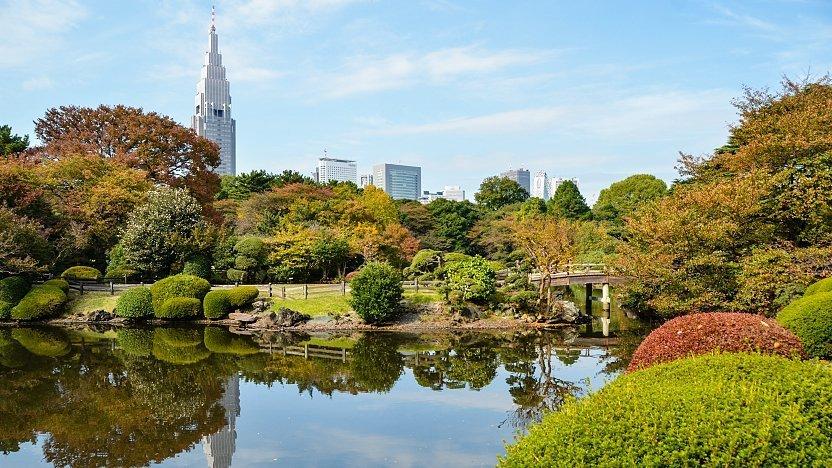
The Shinjuku district in Tokyo is well-known for its vibrant nightlife, fashionable restaurants, and luxurious hotels. However, nestled within this lively district lies one of Tokyo's most captivating natural attractions called the Shinjuku Gyoen park.
The park features vast expanses of lush green spaces and picturesque walking trails that meander around breathtaking flower arrangements, serene ponds, and meticulously maintained shrubs. When cherry blossoms bloom, the park transforms into one of the finest locations to witness the mesmerizing waves of soft pink petals.
Originally constructed during Japan's Edo Period (1603-1867) as a residence for a feudal lord, the park later evolved into a botanical garden and served as a recreational area for Japan's Imperial Family in the early 20th century. Finally, in 1949, it opened its doors to the public as a park.
Inside the park, visitors can explore three distinct garden styles: Japanese, English, and French landscapes. Each style offers a unique and delightful experience for all to enjoy.
16. Hakone Open-Air Museum, Hakone
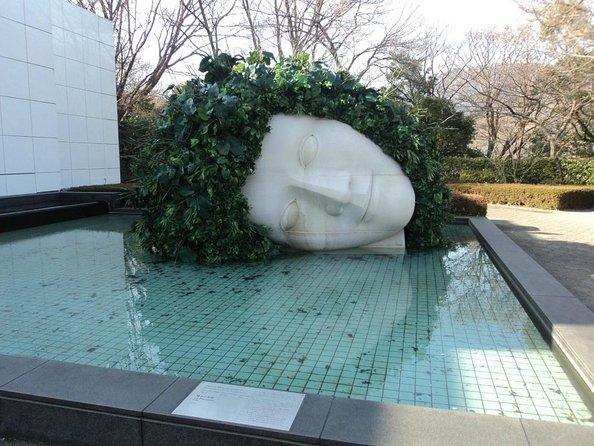
Hakone is a charming small town situated in the Fuji-Hakone-Izu National Park, west of Tokyo. It is renowned for its breathtaking mountains and peaceful hot spring resorts, making it a compelling destination. Another major attraction in this tranquil paradise is the remarkable Open-Air Museum.
As the name suggests, this museum is an expansive sculpture park spanning 17 acres. It was established in 1969 and stands as one of Japan's earliest open-air museums, boasting over 100 sculptures scattered throughout the premises.
Among the notable sculptures is the Symphonic Sculpture, a captivating piece that allows visitors to ascend a stained-glass tower leading to a viewing platform. From there, you can admire the surrounding mountains and other magnificent artworks displayed across the grounds.
Aside from the outdoor exhibits, the museum also houses an indoor collection, featuring one of the world's most impressive assortments of Picasso's works. With over 300 pieces, including oil paintings, prints, ceramics, and sculptures, it is a treasure trove for enthusiasts of this renowned Spanish painter.
17. Naritasan Shinsho-ji, Narita
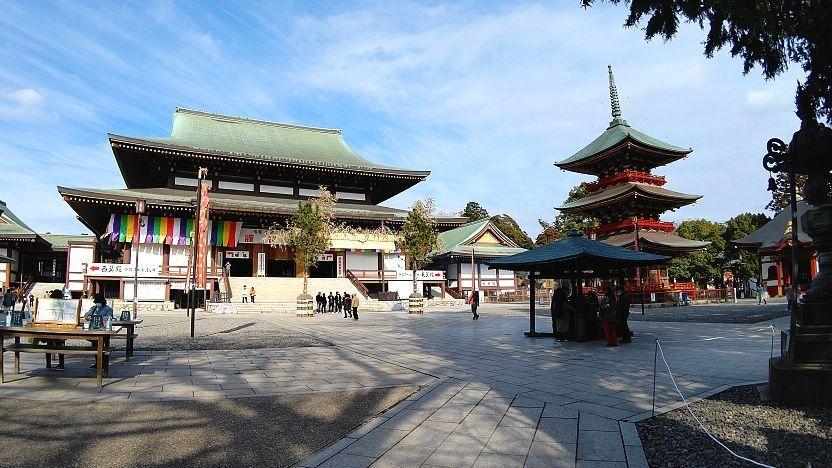
The Naritasan Shinshoji Temple is a very popular Buddhist temple in Japan that has a history of over 1,000 years. It was built to honor a statue of the Buddhist god Fudo Myoo, which was created by Kobo Daishi. The temple grounds have different buildings like pagodas, a park, and the main halls.
When you approach the temple, it feels like you're going back in time. The road leading from the train station to the temple is about half a mile long and is surrounded by restaurants and stores selling handmade crafts. This street has looked the same for hundreds of years. Although the stores may have a modern look, the experience of arriving at the temple complex has stayed the same for centuries.
18. Okinawa Churaumi Aquarium
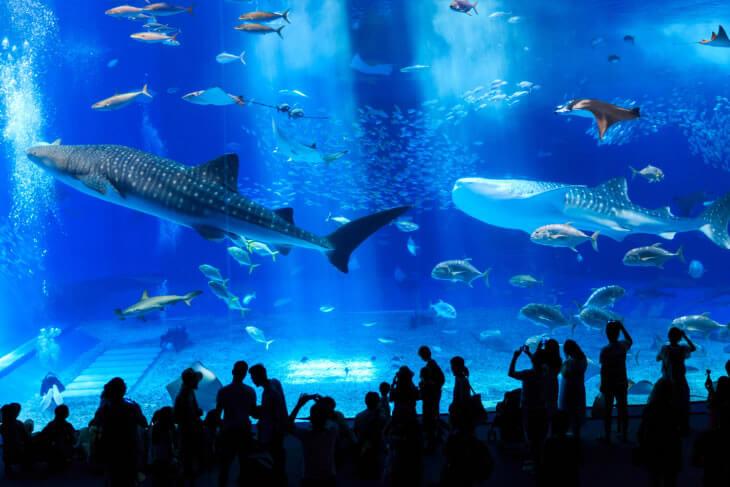
The Okinawa archipelago in Japan is made up of over 150 islands that spread out between Taiwan and the main part of Japan. This special place has a tropical environment that is unlike any other in Japan, with stunning beaches and swaying palm trees. The largest island in the archipelago is also called Okinawa, and it has many museums and the famous Churaumi Aquarium.
The Churaumi Aquarium is widely recognized as the best aquarium in Japan, and it is famous for its incredible Kuroshio Tank. This enormous tank is home to around 60 different kinds of animals, but most people visit to see the enormous whale sharks and graceful manta rays swimming there.
Besides the Kuroshio Tank, the aquarium has other attractions too. There is an exhibit showcasing deep-sea creatures that glow in the dark, as well as an area dedicated to tiger and bull sharks. Outside, you can find various pools where dolphins, sea turtles, and manatees live.
19. Matsumoto Castle, Nagano
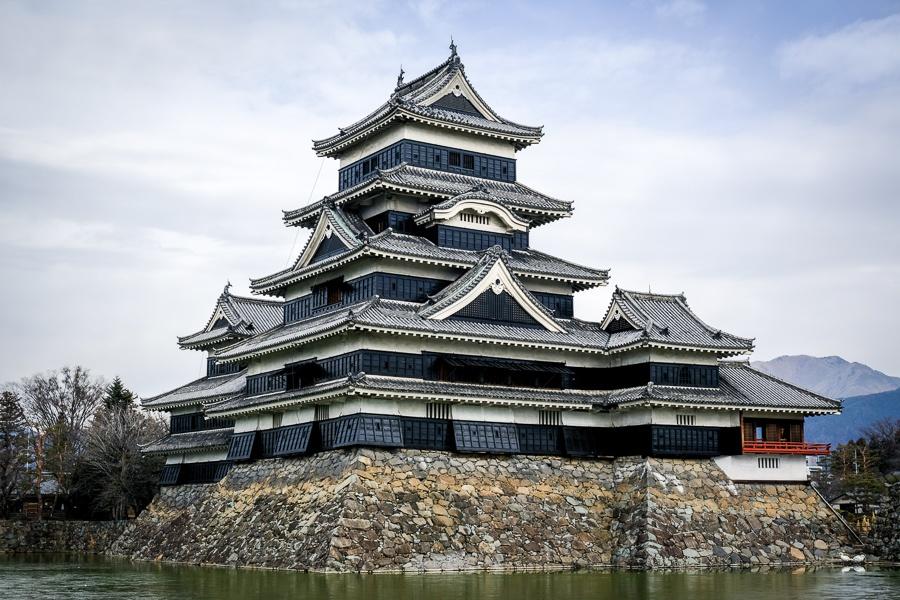
Matsumoto Castle is the most captivating and intact among Japan's numerous beautiful historic castles. It was constructed between 1592 and 1614 and can be found in Nagano city. A great time to visit the castle is during spring, when the surroundings are adorned with the soft pink hues of cherry blossoms.
Inside the castle, visitors get a remarkable glimpse into the past. The wooden interiors have been preserved, providing an authentic historical experience. Matsumoto Castle is one of Japan's five castles designated as "National Treasures," and it holds the distinction of being the country's oldest remaining six-story castle tower.
20. Arashiyama Monkey Park, Kyoto

The Arashiyama Monkey Park is a famous attraction in Kyoto, Japan. It is located in the Arashiyama area. One of the best things to do in Kyoto and in Japan overall, the park offers a fantastic experience. To reach the park, you can take a short hike up a mountain covered in forests. From there, you will be able to enjoy stunning views of the city and see a group of over 120 Japanese macaque monkeys.
Inside the park, the monkeys freely roam around, which allows visitors to get very close to them. You can even buy food at the park and feed the monkeys. There is a small wooden enclosure where you can do this, but outside the enclosure, the monkeys move around freely, jumping from branch to branch and running along the dirt trails.
At the top of the mountain, you can also admire the breathtaking scenery of Kyoto and the beautiful mountain peaks in the distance. It is especially enjoyable to visit the monkey park during the spring when cherry blossoms are in full bloom or in the fall when the leaves change color, as you'll have a wonderful view from above.
21. Kenrokuen Garden, Kanazawa
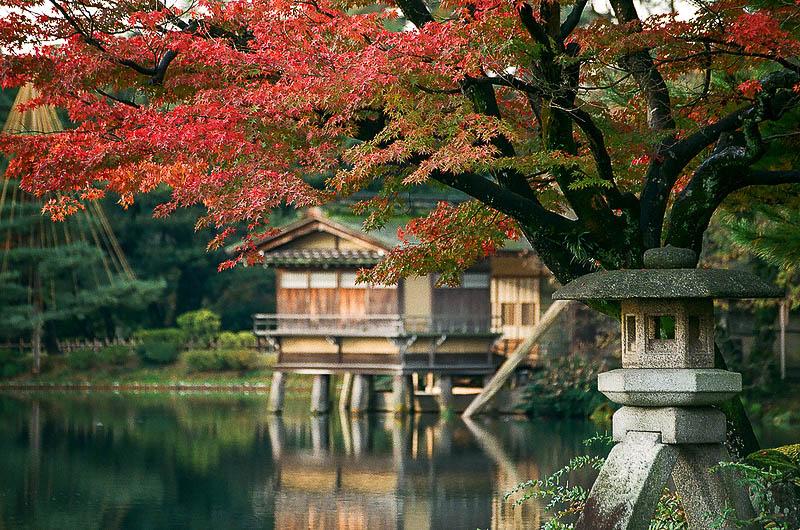
The gardens in Japan are meticulously maintained and pay great attention to even the smallest details. They can be considered true masterpieces. When you visit a Japanese garden, it feels like stepping into a breathtaking painting. One of the most stunning gardens in Japan is the Kenrokuen Garden located in Kanazawa. Originally part of Kanazawa Castle, it was opened to the public in the 19th century.
What sets this garden apart is its design based on the six essential elements of a perfect garden: spaciousness, seclusion, antiquity, abundant water, scenic views, and artificiality.
While exploring the garden, you'll come across beautiful pools, gentle streams, bridges, teahouses, carefully arranged rocks and flowerbeds, as well as magnificent vistas and quiet corners.
The park is particularly enchanting during spring when cherry blossoms bloom and in autumn when vibrant colors transform the landscape.
Tips for Making the Most of Your Visit to Japan
Traveling in Shoulder Seasons:
Japan has numerous incredible attractions that can become quite crowded during the peak summer months. However, if you're flexible with your travel plans, you can design an itinerary to explore this beautiful country during the quieter shoulder seasons. By doing so, you'll avoid long queues and have the opportunity to experience things that other visitors might miss out on, such as witnessing the cherry blossoms in Nara Park during spring, admiring the stunning autumn colors in Jozankei Onsen, a scenic spa destination, or marveling at historical structures like Fukuoka Castle covered in snow.
High-Speed Rail:
Japan boasts an exceptional and efficient public railway system, which makes traveling within the country a breeze. Japan Railways manages an extensive network of over 21,000 kilometers of rail lines, connecting various destinations to major cities like Tokyo. The most impressive of these is the Shinkansen Bullet Train, capable of reaching speeds of 320 kilometers per hour. This means that a journey from Tokyo to Fukuoka, spanning approximately 1,170 kilometers, can be completed in just over six hours. To enjoy cost savings, make sure to obtain a Japan Rail Pass or book your rail tours in advance before your departure.